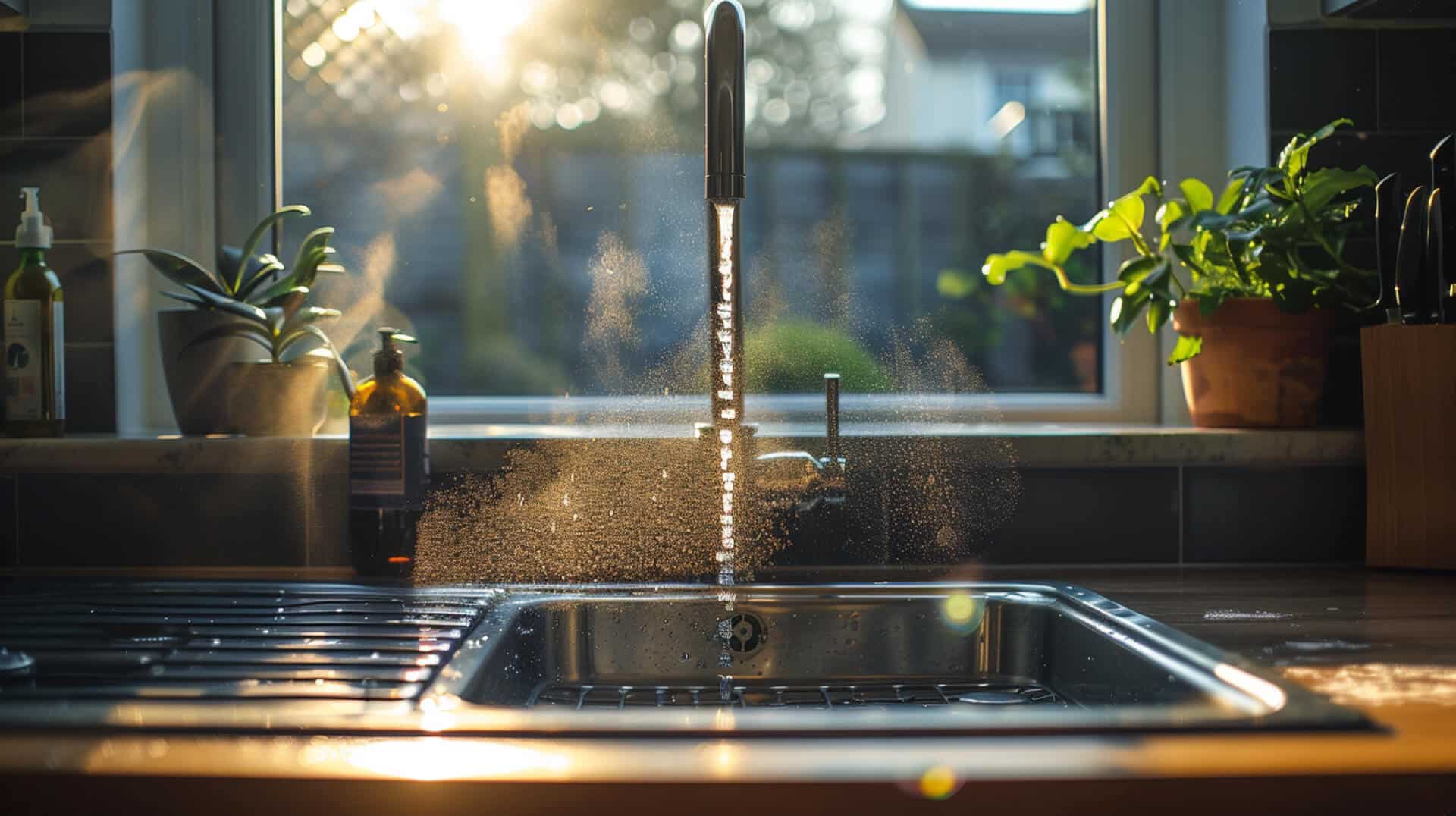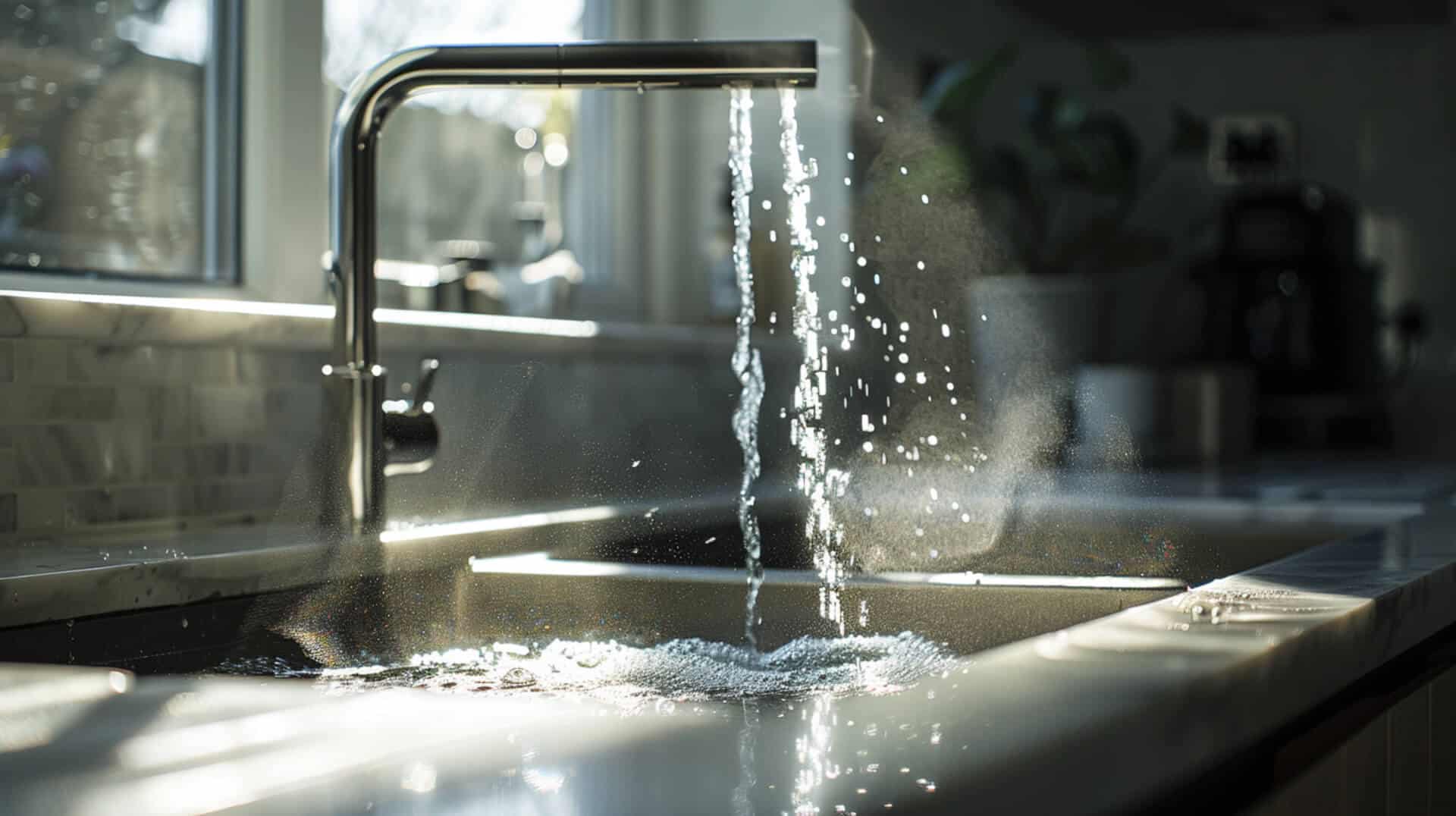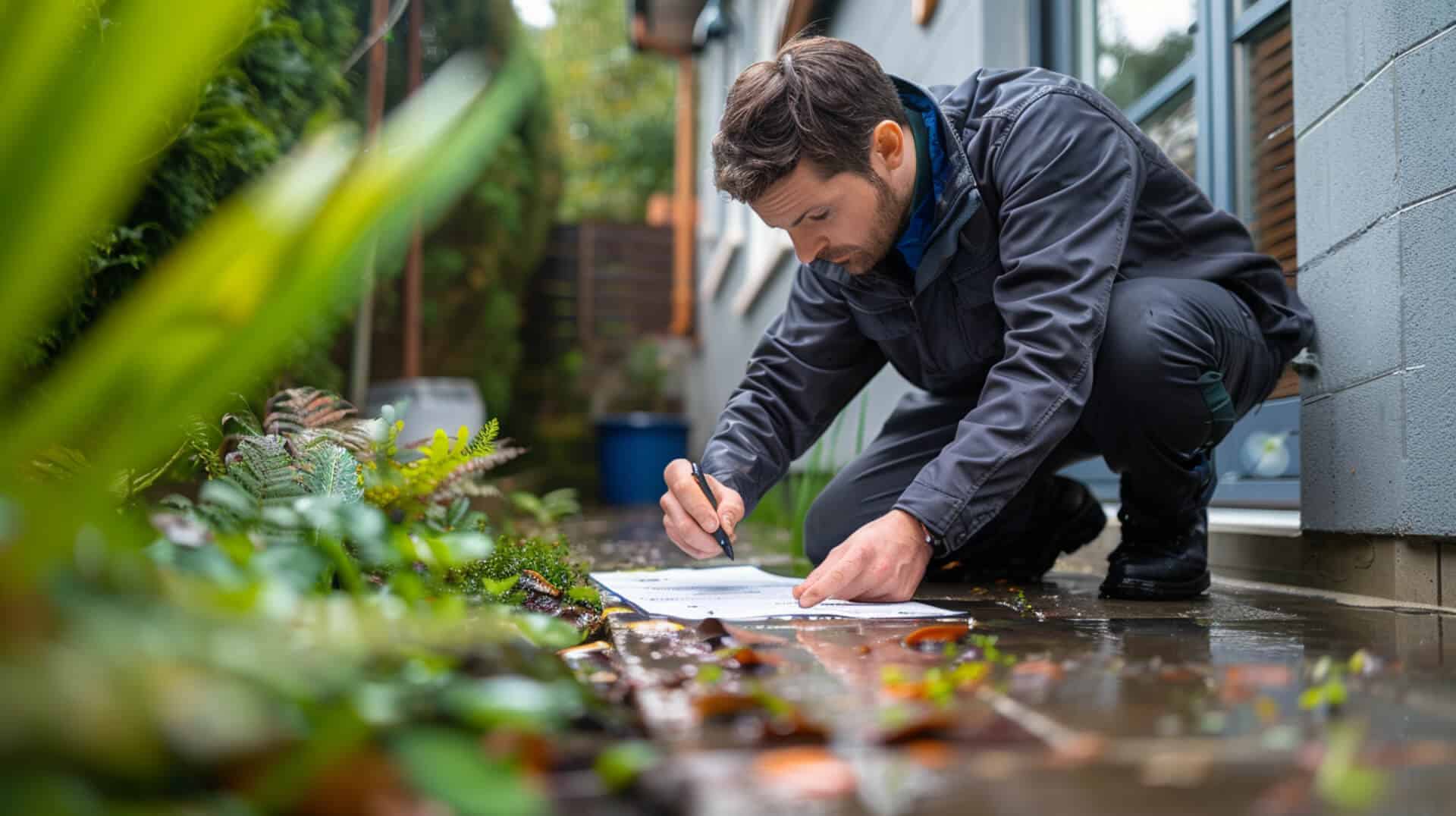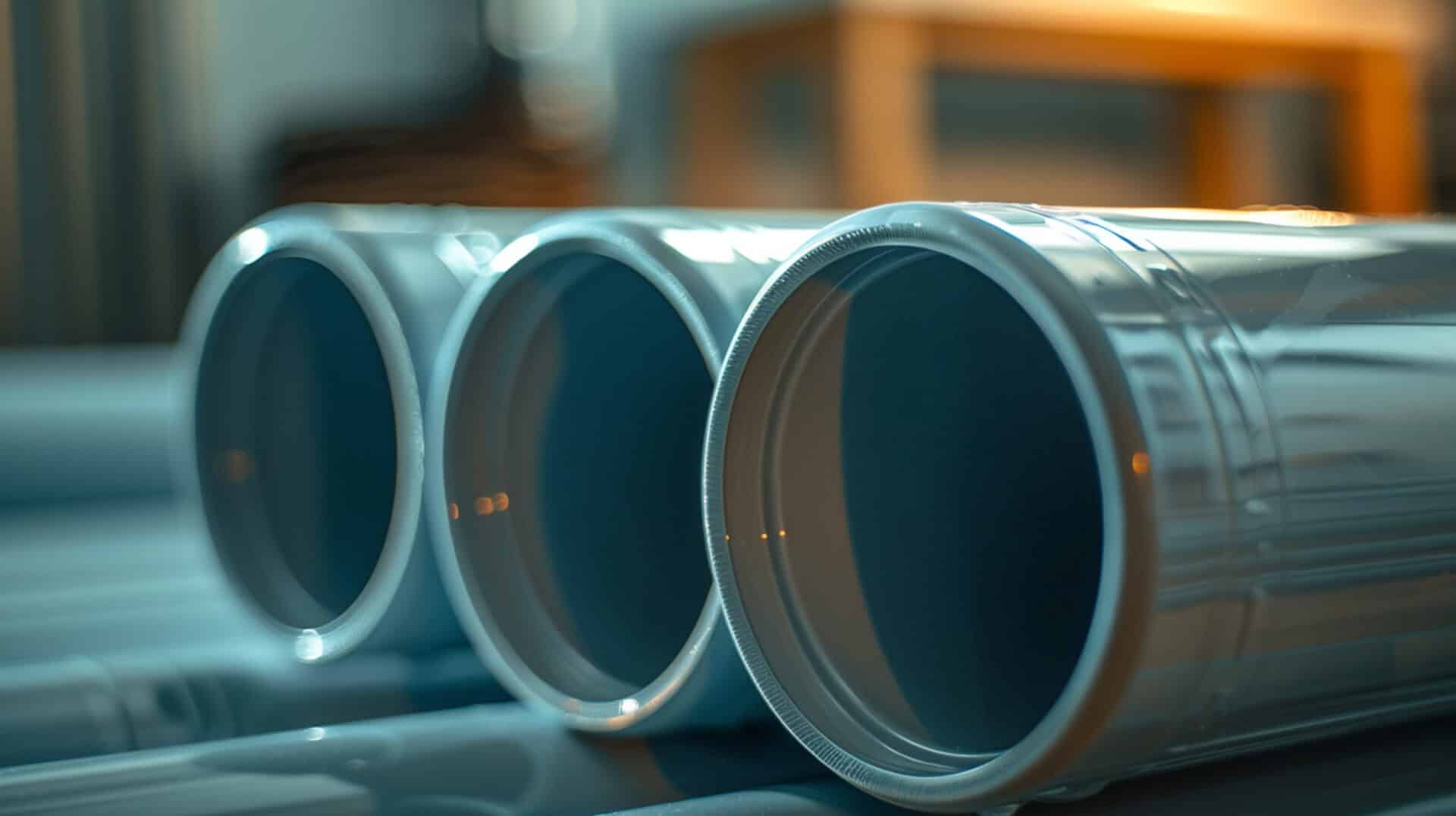 What Is The Process Of Conducting A Fog Survey
What Is The Process Of Conducting A Fog Survey

What Constitutes Fats, Oils, and Grease in Wastewater Management
Fats, Oils, and Grease (FOG) are byproducts of cooking and food preparation that enter wastewater systems. These substances, often found in a semi-solid state, can solidify within sewer lines, leading to blockages and disruptions in wastewater management.
The Critical Role of Managing FOG
Effective FOG management is essential for maintaining sewer health and protecting the environment. Without proper management, FOG can accumulate, causing blockages that lead to sewage overflows, which in turn can result in significant environmental pollution and damage to infrastructure.
FOG Surveys in Wastewater Management Practices
FOG surveys are specialised assessments designed to identify and quantify FOG accumulation within a sewer system. These surveys are a crucial component of broader wastewater management practices, ensuring that FOG levels are monitored and managed effectively to prevent blockages and maintain system efficiency.
Legal Implications and Compliance Requirements
There are stringent legal implications and compliance requirements associated with FOG management. Businesses and municipalities are required to adhere to specific regulations, which may include the installation of grease traps or Grease Recovery Units (GRUs) and the implementation of dosing systems to mitigate the impact of FOG on the sewer system. Failure to comply with these regulations can result in penalties and increased costs for remediation and repair.
The Importance of FOG Management for Property Owners

Impact of FOG Accumulation on Infrastructure
Accumulation of fats, oils, and grease (FOG) in wastewater systems can lead to significant issues for property owners. When FOG is not properly managed, it can solidify within plumbing systems, causing blockages that disrupt normal wastewater flow. This can result in backups and overflows, which may necessitate costly repairs and can even lead to severe property damage.
Environmental and Infrastructural Risks
The solidification of FOGS not only poses risks to plumbing infrastructure but also to the environment. Blockages can cause untreated wastewater to spill into natural water bodies, leading to pollution and harm to aquatic ecosystems. Additionally, the buildup of FOGS in sewer systems can increase the risk of sanitary sewer overflows, which are significant environmental health concerns.
Regulatory Compliance in FOG Management
Wastewater regulations mandate FOG management to protect sewer systems and the environment. Compliance is not optional; it is a legal requirement for property owners and businesses that produce wastewater containing FOG. Failure to comply can result in penalties, fines, and increased scrutiny from regulatory bodies.
Function of Grease Traps and GRUs
Grease traps and Grease Recovery Units (GRUs) are essential components in managing FOG. Grease traps are designed to intercept FOG before it enters the wastewater system, while GRUs actively separate and recover FOG from the wastewater. Both systems are effective in reducing the amount of FOG that reaches the sewer, thereby helping property owners maintain compliance and protect their infrastructure. Regular maintenance of these systems is crucial to ensure they function correctly and efficiently.
Identifying the Need for a FOG Survey

Recognising Signs for a FOG Survey
Property owners should be vigilant for indications that a FOG survey is necessary. Key signs include slow drainage, unpleasant odours emanating from drains, and recurring blockages in the plumbing system. These symptoms suggest an accumulation of fats, oils, and grease that could compromise the efficiency of wastewater management and necessitate a professional assessment.
Frequency of FOG Surveys
To maintain compliance with wastewater regulations and ensure the efficient operation of sewer systems, FOG surveys should be conducted regularly. The frequency may vary depending on the volume of FOG your facility produces, but typically, an annual survey is recommended. High-volume establishments, such as restaurants, may require more frequent surveys.
Consulting Professionals for FOG Surveys
For a comprehensive FOG survey, property owners should engage with qualified environmental service providers. These professionals have the expertise and equipment necessary to conduct thorough assessments and provide actionable recommendations for FOG management.
Preliminary Assessments
Before a full FOG survey is carried out, preliminary assessments are crucial. These may include:
- Evaluating the current FOG management practices: Assessing the effectiveness of existing grease traps or recovery units.
- Site inspection: Identifying potential sources of FOG and areas prone to blockages.
- Reviewing maintenance records: Understanding past issues and interventions can inform the survey process.
These initial steps are essential in preparing for a detailed FOG survey that will yield accurate and useful results.
Technologies and Equipment in FOG Surveys

Role of Innovative Solutions
In the realm of FOG management, innovative solutions such as the FiltaFOG Cyclone and BioCeptor play a pivotal role. These systems are designed to enhance the efficiency of FOG surveys by:
- Automating the separation process: They streamline the extraction of FOG from wastewater, reducing manual intervention.
- Improving accuracy: Advanced technologies ensure precise measurement of FOG content, aiding in the assessment of a facility’s FOG management needs.
Function of Grease Traps and Biological Systems
Grease traps and biological systems are integral to the separation of FOGS from wastewater. Their functions include:
- Intercepting FOG before entering sewer systems: Grease traps are installed to capture FOG at the source, preventing it from clogging the wastewater infrastructure.
- Biologically breaking down FOG: Systems like BioCeptor use microorganisms to degrade FOG, turning it into simpler substances that are less harmful to the environment.
Technological Advancements
Recent advancements in technology have significantly improved the process of conducting FOG surveys. These include:
- Enhanced sensors: For detecting FOG levels in real-time.
- Data analytics: To interpret the results of FOG surveys for better decision-making.
Integration of Land Surveying Techniques
Land surveying techniques, when integrated with FOG management practices, contribute to a more comprehensive understanding of the impact of FOG on the environment. This integration involves:
- Utilising GPS and aerial mapping: To pinpoint areas most affected by FOG discharge.
- Employing drones and laser scanners: For assessing hard-to-reach areas and providing detailed topographical data.
These technologies and equipment collectively ensure that FOG surveys are thorough, accurate, and conducive to effective FOG management strategies.
Preparing for a FOG Survey

Initial Steps in FOG Survey Preparation
To ensure a successful FOG survey, the initial preparation is crucial. This involves:
- Assessing the current situation: Reviewing existing FOG management practices and identifying areas of concern.
- Gathering necessary equipment: Ensuring all tools for measurement and sampling are ready and calibrated.
- Scheduling the survey: Choosing a time that minimises disruption to normal operations.
Data Collection and Analysis
During the FOG survey, data collection is methodical and includes:
- Sampling wastewater: To measure FOG concentrations at various points within the system.
- Recording observations: Noting any visible signs of FOG accumulation or infrastructure issues.
- Analysing samples: Using laboratory techniques to quantify FOG levels accurately.
Role of GPS and Aerial Mapping
GPS and aerial mapping technologies enhance the precision of FOG surveys by:
- Mapping the infrastructure: Providing a clear layout of the wastewater system.
- Identifying hotspots: Pinpointing areas with high levels of FOG accumulation.
Utilising Survey Results
The results from a FOG survey inform the development of a comprehensive management plan, which includes:
- Targeted interventions: Focusing on areas identified as problematic.
- Recommendations for equipment: Suggesting upgrades or new installations where necessary.
- Maintenance schedules: Establishing regular cleaning and inspection routines to prevent future issues.
Implementing Solutions Based on FOG Survey Findings

Advanced FOG Management Technologies
Upon completion of a FOG survey, implementing the right solutions is critical for efficient management. Technologies such as the FiltaFOG Cyclone, BioCeptor, and GreasePak play a significant role:
- FiltaFOG Cyclone: Utilises centrifugal separation to remove FOG from wastewater, enhancing the efficiency of grease traps.
- BioCeptor: Employs biological treatment to break down FOG, reducing the need for manual cleaning.
- GreasePak: A dosing system that introduces bacteria to digest FOG, maintaining clear drains and preventing odours.
Preventative Measures from Survey Insights
FOG survey results provide valuable insights that inform preventative measures:
- Regular maintenance: Establishing a schedule for cleaning and inspecting grease management systems.
- Staff training: Educating employees on best practices for FOG disposal and the importance of compliance.
Post-Survey Maintenance and Monitoring
Effective FOG management extends beyond the implementation of technologies. It requires ongoing maintenance and monitoring:
- Inspection routines: Regular checks to ensure equipment is functioning properly and efficiently.
- Performance tracking: Monitoring systems to detect any deviations from expected performance, allowing for timely interventions.
By adopting these measures, you can ensure that your property remains compliant with regulations, avoids costly blockages, and contributes to the overall health of the sewer system.
Compliance Requirements in FOG Management

Understanding Wastewater Regulations for FOG
Wastewater regulations mandate specific practices to manage fats, oils, and grease (FOG) effectively. As a property owner, you’re required to adhere to these regulations to prevent FOG from entering the sewer system, which can lead to blockages and environmental damage. Compliance involves installing appropriate FOG management systems, such as grease traps or Grease Recovery Units (GRUs), and ensuring they are maintained regularly.
Role of Grease Traps and Dosing Systems
Grease traps and dosing systems are critical in achieving compliance. Grease traps intercept FOG before it enters the wastewater system, while dosing systems introduce beneficial bacteria that break down FOG within the drainage system. Both systems must be correctly sized for your facility and maintained according to the manufacturer’s guidelines and local regulations.
Documentation for Compliance Verification
To verify compliance, you must maintain accurate records, including:
- Installation and maintenance logs: Documenting the installation details and routine maintenance of FOG management systems.
- Waste disposal records: Keeping track of how and where FOG waste is disposed of, ensuring it aligns with regulatory requirements.
Ensuring Ongoing Compliance
Regular FOG surveys are essential for ongoing compliance. These surveys assess the effectiveness of your FOG management systems and identify any areas needing improvement. By conducting these surveys, you can ensure that your facility remains compliant with regulations, thus avoiding potential fines and contributing to the overall health of the sewer system.
Addressing Challenges in FOG Management

Common Challenges in FOG Surveys
During FOG surveys, property owners often encounter challenges that can impede the process. These include:
- Inaccessible areas: Locations within a property where FOG accumulation is difficult to assess due to physical constraints.
- Varied FOG composition: Different types of FOG require specific management strategies, complicating the survey process.
- Communication with staff: Ensuring all employees understand the importance of FOG management and comply with best practices.
Impact of Adverse Conditions
Adverse weather conditions and challenging terrains can significantly affect the accuracy and safety of FOG survey processes. Heavy rainfall, for example, can dilute FOG samples, while rough terrains may hinder the placement of survey equipment.
Overcoming Survey Challenges
To overcome these challenges, property owners can:
- Utilise specialised equipment: Weather-resistant tools and drones can access and assess difficult terrains.
- Adapt survey techniques: Tailoring the approach to accommodate the specific conditions of the property.
Contribution of Innovative Technologies
Innovative technologies and equipment are instrumental in addressing FOG management challenges:
- Advanced sensors: Provide precise measurements of FOG levels even in adverse conditions.
- Data analytics platforms: Offer insights into FOG management trends and predict potential blockage points.
By leveraging these solutions, property owners can ensure effective FOG management, safeguarding their infrastructure and the environment.
Integrating Fog Computing in FOG Management

Fog computing, an architectural model that brings the benefits of cloud computing closer to data sources, is increasingly relevant in managing FOG (Fats, Oils, and Grease) in wastewater systems. This approach can enhance FOG management practices by providing real-time data analysis and decision-making capabilities at the network edge.
Benefits of Fog Computing for FOG Management
Fog computing offers several advantages for FOG management:
- Reduced Latency: By processing data near its source, fog computing minimises delays in data transmission, allowing for quicker responses to potential FOG build-up.
- Energy Efficiency: Local data processing reduces the need to transmit large volumes of data to distant cloud servers, saving energy and reducing costs.
Addressing Security Challenges
While fog computing enhances FOG management, it also introduces security concerns:
- Data Privacy: Sensitive information processed at the edge requires robust encryption and access controls.
- Network Security: The distributed nature of fog computing necessitates comprehensive security protocols to protect against unauthorised access and cyber threats.
Enhancing FOG Management Practices
To address these security challenges and bolster FOG management, property owners should:
- Implement Strong Security Measures: Including firewalls, intrusion detection systems, and regular security audits.
- Stay Informed: Keeping abreast of the latest security trends and threats can help preemptively protect fog computing infrastructure.
By integrating fog computing into FOG management practices, property owners can leverage the benefits of advanced data processing while maintaining a secure and efficient wastewater management system.
Emerging Trends in FOG Management

Advancements in Survey Technologies
The field of FOG management is witnessing significant technological advancements that promise to streamline the survey process and enhance compliance measures. Innovations such as remote sensing and real-time FOG monitoring systems are becoming more prevalent, offering property owners the ability to detect and address FOG issues promptly.
Research Contributions to Fog Computing
Research in fog computing is driving the development of more efficient and scalable architectures. This progress is crucial for FOG management as it allows for the integration of Internet of Things (IoT) devices, which can monitor and manage FOG levels autonomously.
IoT Expansion and FOG Management
The expansion of IoT technology plays a transformative role in FOG management. IoT devices can provide continuous data on FOG levels, enabling proactive maintenance and preventing blockages before they occur. This connectivity ensures that FOG management systems are more responsive and less prone to failure.
Staying Ahead with IoT and Fog Computing
To stay ahead of the curve, property owners should consider:
- Investing in IoT-enabled devices: For real-time FOG monitoring and management.
- Adopting fog computing solutions: To process data locally, reducing latency and improving response times.
- Engaging with industry experts: To understand the latest technologies and best practices in FOG management.
By embracing these emerging trends, you can ensure that your FOG management practices are efficient, compliant, and future-proof.
Selecting the Right Solutions Provider for FOG Management

When embarking on the essential task of FOG (Fats, Oils, and Grease) management, selecting a competent solutions provider is paramount. The provider you choose should not only offer comprehensive services but also stand out with a proven track record of success.
Criteria for Choosing a FOG Management Provider
In evaluating potential FOG management providers, consider the following criteria:
- Experience and Expertise: Look for providers with a solid history in FOG management and a deep understanding of the associated challenges and regulations.
- Technology and Equipment: Ensure the provider uses the latest technologies and equipment, which are crucial for effective FOG management.
- Compliance Assurance: The provider should have a clear strategy for helping you comply with all relevant wastewater regulations.
- Customer Support: Opt for a provider that offers robust customer support, including regular maintenance and emergency services.
Distinguishing Qualities of Top Providers
Companies like Filta and Mechline distinguish themselves through:
- Innovative Solutions: Offering products like the FiltaFOG Cyclone and BioCeptor, which are designed for efficient and odour-free FOG management.
- Comprehensive Services: Providing a full suite of services, from site assessments to installation and ongoing maintenance.
Benefits of Comprehensive FOG Management Solutions
Comprehensive FOG management solutions offer several benefits:
- Efficiency: Streamlined processes that save time and reduce the risk of blockages.
- Cost-Effectiveness: Preventative measures can lead to long-term savings by avoiding costly emergency repairs.
- Environmental Protection: Proper FOG management contributes to the preservation of local waterways and ecosystems.
Evaluating Provider Effectiveness
To assess the effectiveness of a solutions provider’s offerings, you should:
- Request References: Speak with current clients to gauge their satisfaction with the provider’s services.
- Review Case Studies: Examine the provider’s past projects to understand their approach and the outcomes they’ve achieved.
- Consider Certifications: Look for providers with relevant industry certifications, which can be an indicator of quality and reliability.
By carefully considering these factors, you can select a FOG management provider that will meet your needs and ensure your property remains compliant and environmentally responsible.
The Critical Role of FOG Surveys in Wastewater Management

Conducting a FOG (Fats, Oils, and Grease) survey is an essential component of responsible wastewater management. For property owners, business owners, and facility managers, understanding the process and significance of FOG surveys is crucial for several reasons:
Ensuring Effective Wastewater Management
A FOG survey helps to identify and quantify the levels of FOG present in your wastewater system. This information is vital for:
- Preventing blockages: By understanding FOG levels, you can take proactive steps to prevent clogs and backups.
- Maintaining infrastructure: Regular surveys can help protect your plumbing and sewer connections from damage caused by FOG accumulation.
Benefits to Property Owners and the Environment
A comprehensive approach to FOG management, starting with a thorough survey, offers significant benefits:
- Cost savings: By avoiding blockages and the associated repair costs, you can manage your finances more effectively.
- Environmental protection: Proper FOG management helps prevent pollution of local waterways, contributing to a healthier ecosystem.
Key Takeaways for Effective FOG Management
As you consider the importance of FOG surveys, remember:
- Regular assessments: Schedule FOG surveys routinely to stay ahead of potential issues.
- Compliance: Ensure your practices meet regulatory standards to avoid penalties.
- Education: Stay informed about FOG management best practices and the latest technologies.
The Value of Education and Awareness
Ongoing education and awareness are instrumental in enhancing FOG management practices. By staying informed about the latest methods and regulations, you can ensure that your wastewater management strategies are not only compliant but also environmentally sound and cost-effective.


